7Artisans Black Friday Deals
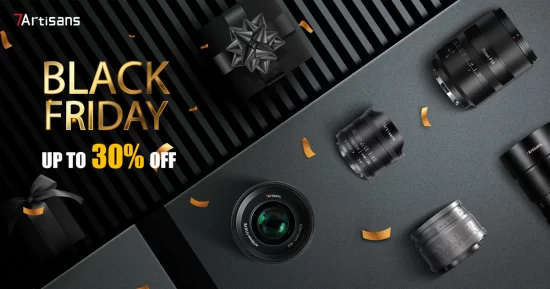
7Artisans launched their Black Friday Deals:
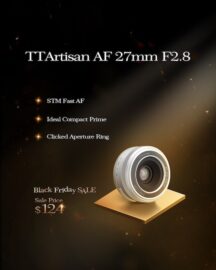
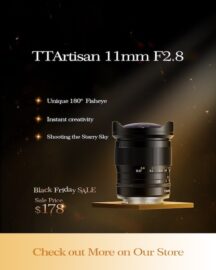
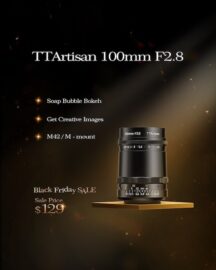
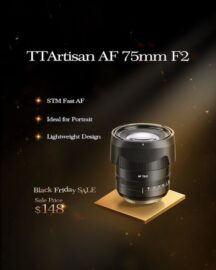
They also offer Balck Friday specials on their Amazon store:
The post 7Artisans Black Friday Deals appeared first on Photo Rumors.

7Artisans launched their Black Friday Deals:




They also offer Balck Friday specials on their Amazon store:
The post 7Artisans Black Friday Deals appeared first on Photo Rumors.
 |
$1000 might sound like a lot of money for a camera, but it's probably the least we'd recommend spending if you want to go beyond phone photography. The picks on this list will give you more control than a phone and offer a more satisfying photographic experience.
At this price point, your main options will be entry-level interchangeable lens cameras or enthusiast-tier compact cameras with a built-in lens. Compact cameras offer more control than a phone and a greater zoom range, but – despite having sensors that are around 60% larger – likely won't offer a huge jump in image quality compared to the latest flagship phones.
Meanwhile, an interchangeable lens camera won't be as easy to carry around and comes with the added expense of lenses. However, they can make you feel even more involved in the photographic process, and the flexibility of swappable lenses will let you learn and grow into different types of photography as you develop your passion. They also feature much larger sensors than phones and the majority of compacts.
It's worth noting that camera makers sometimes assume that beginners will stick with the basic 'kit' zoom that comes with the camera, so it's worth checking whether a good selection of lenses is available (at a price you're willing to spend) before deciding which brand's system to buy into.
24MP Dual Pixel APS-C CMOS sensor | 4K/30p video (60p with crop) | 15fps shooting (23fps with e-shutter)
 |
| Photo: Shaminder Dulai |
There are a few things that earn it the top place of this list. The first is its stand-out usability, with dual top-plate dials for controlling exposure settings and a joystick to control its very capable autofocus system. It also has a decent selection of lenses; third parties like Sigma have stepped in to round-out the selection of primes and higher-end zoom lenses available for it, meaning you've got a lot of good options if you want to move beyond the kit lens that came with it.
With the EOS R10 Canon has re-created the capability and usability of its popular Rebel series DSLRs in its RF mirrorless lens mount. Now that there's a wider variety of lenses available for it, it's an excellent pick for those looking to get into photography.
See Canon EOS R10 studio scene
While we much prefer the higher level of control that the EOS R10 provides, the less expensive Canon EOS R50 may also be worth a look if you're extremely budget-conscious but still want to stay in the Canon ecosystem. It has fewer control points – most notably, it misses out on the EOS R10's joystick – and it loses out on features such as 4K/60p video capture and an articulating display, but it's still pretty capable.
We don't recommend the cheaper still EOS R100. It's based on a previous generation of technology, so it's slower and has less sophisticated autofocus.
20.9MP APS-C sensor | Subject recognition AF | Full-width 4K video up to 30p
 |
| Photo courtesy Nikon |
The Z50II makes a case for being the best pick for beginners, thanks to a simple and effective AF system with automatic subject detection. However, while plenty of prime lenses are available, Nikon appears to be blocking bright zooms from third-party makers, limiting your upgrade options compared with its rivals.
Read our Nikon 50II Initial Review
Nikon's Z fc is a stylish camera based on the original Z50, which means it has the same sensor as the Z50II. We like it a lot, but the autofocus on the Z50II is such a marked improvement that it's hard to recommend picking up a Z fc at this point – you can read our full comparison between the two cameras here. If you have a strong attachment to the Z fc's aesthetics, your best option is probably holding-off for a bit to see if Nikon updates the Z fc. If that's not an option, see if you can get it on sale or used.
24MP APS-C sensor | Hybrid AF with Real-time Tracking | 4K video capture
 |
|
The Sony a6100 offers a lot of power in a compact, well-priced body. The 16-50mm power zoom isn't the best, though. Photo: Richard Butler |
It was a very capable and affordable camera when it was launched several years ago, offering some of the best autofocus around and a wide selection of lenses. The latter part is still an advantage, but many competitors' autofocus systems are now on par with, or even more capable than, the a6100's. However, it's still worth considering if you want to get both a camera body and a decent lens for under $1,000.
See the Sony a6100 studio scene
20MP 1" Stacked CMOS sensor | 24-70mm equiv. F1.8-2.8 lens | 4K video capture
 |
| The RX100 VA can deliver excellent image quality, backed up by good autofocus |
The Sony Cybershot DSC-RX100 VA is an updated RX100 V with the same 20MP Stacked CMOS sensor, fast 24-70mm equiv. lens, hybrid AF system, clever popular viewfinder and excellent 4K video quality. The 'VA' adds a larger buffer, new metering, white balance and AF modes, an improved EVF refresh rate and more.
Sony essentially created this class of cameras with the original RX100 model. A large sensor gives image quality that's still a match for a good smartphone but with the benefit of an actual zoom lens. The Stacked CMOS sensor and a built-in viewfinder add to the cost but also create a very powerful camera.
The RX100 VII is also worth a look. It's more expensive, and its lens is slower, taking away some of the low light performance, but it offers a much longer zoom, giving still more benefit over a smartphone.
Read our Sony Cyber-shot RX100 V review
See the Sony Cyber-shot DSC RX100 V studio scene
26MP APS-C BSI CMOS sensor | Fully articulated 3" LCD | 6.2K 3:2 video up to 30p
 |
It's aimed at creators taking pictures and video for the web, with a suite of vlogging features meant to let you shoot video that's ready to upload as soon as you transfer it to your phone and a dial that lets you easily switch between 'Film Simulations,' Fujifilm's much-loved color modes. It also has the full suite of stills features from larger, more expensive models – minus a viewfinder – and its X-mount lens mount also gives you access to the most complete range of APS-C lenses, no matter where your photography or content creation journey takes you.
Read our Fujifilm X-M5 initial review
If you plan to shoot more videos than photos, you may want to consider the Sony ZV-E10 II. Its lack of a mechanical shutter makes it worse for photography, but its autofocus tracking performance in video sets it apart from the X-M5. It also has video-centric features like a front tally light and included wind sock, and it can shoot 4K 60fps without having to crop in too tightly on the frame.
Click here to read the ZV-E10 II review
Sony also makes a compact vlogging camera called the ZV-1 II. It gives up a lot compared to the ZV-E10 II: it has a much smaller Type-1 sensor, no 10-bit video, no 4K 60fps, and, obviously, no ability to switch out lenses. In return, you get built-in ND filters, which will help if you're shooting in direct sunlight, and a built-in lens, which means that you're getting a complete package for under $1,000. Still, it's hard to recommend when cameras like the DJI Osmo Pocket 3 exist and when many phones rival it in vlogging capabilities.
Click here to read our Best Cameras for Vlogging buying guide
This buying guide is based on cameras used and tested by DPReview's editorial team. We don't select a camera until we've used it enough to be confident in recommending it, usually after our extensive review process. The selections are purely a reflection of which cameras we believe to be best: there are no financial incentives for us to select one model or brand over another.

Here is a quick update on my previous post - the first rumored lens is the Samyang AF 35mm f/1.4 P FE (replacement of the existing version):
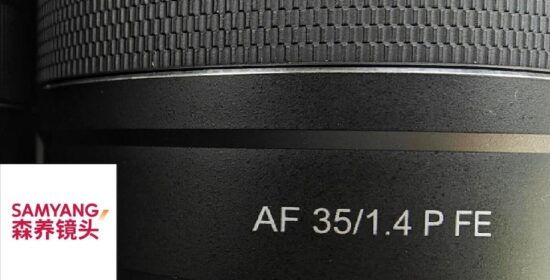
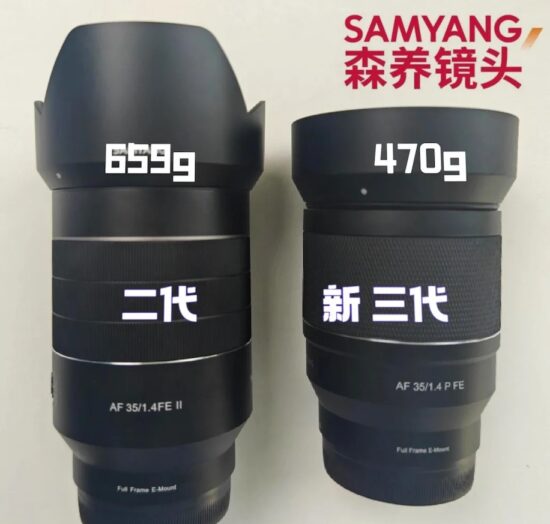

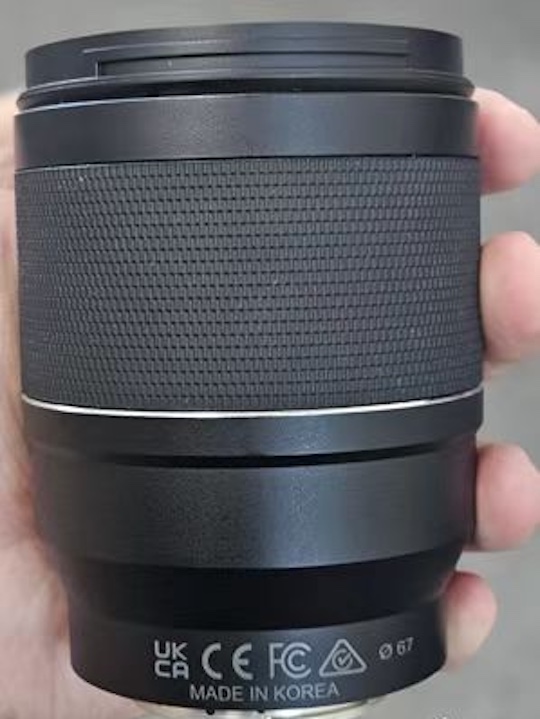
Here are the specs of the new lens:
The second lens is the Samyang AF 12mm f/2 RF-S (the lens already exists for Sony E and Fuji X mounts):
The post Pictures of the upcoming Samyang lenses: AF 35mm f/1.4 P FE and AF 12mm f/2 RF-S appeared first on Photo Rumors.
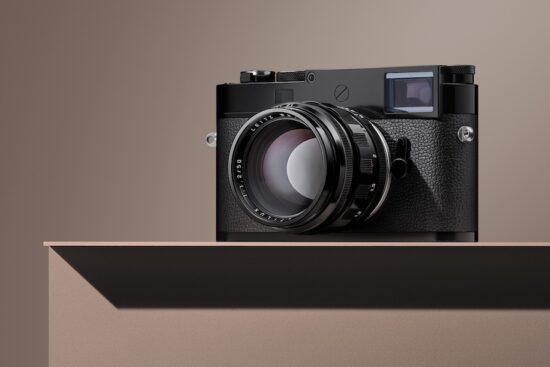
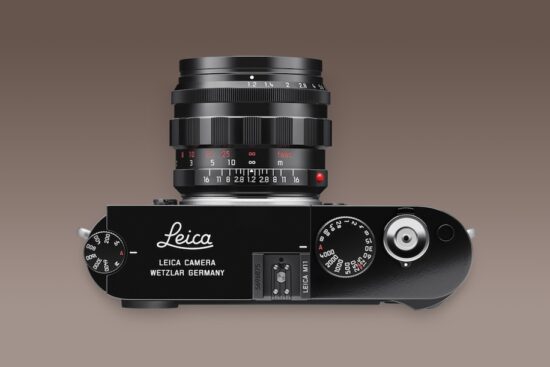
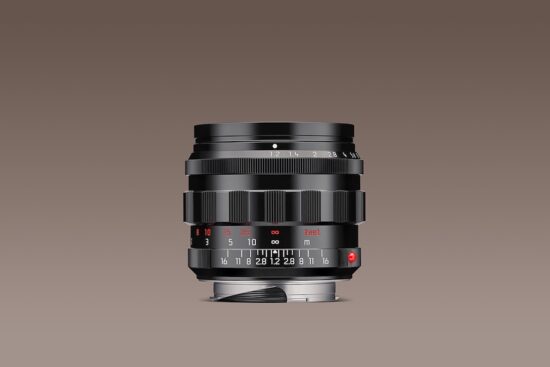
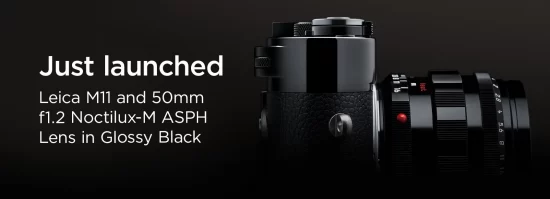
The previously rumored Leica M11 camera and Noctilux 50mm f/1.2 ASPH lens in glossy black paint are now officially announced as expected. Pre-orders are open at B&H Photo (lens), Koch, and WEX UK. Additional information is available here:
Leca also announced new taupe accessories: leather bag, strap and case
Officially announced: Leica M11 camera and Noctilux 50mm f/1.2 ASPH lens in glossy black paint
Leica also reported the best financial result in the history of the company:
Leica reports the best financial result in the history of the company
Other Leica related news:
Pixii Max digital rangefinder camera sensor test results by PhotonsToPhotos
Additional pictures:
The post Leica announces new camera and lens in glossy black, reports the best financial result in the history of the company appeared first on Photo Rumors.
Earlier this week, Sony announced its FE 28-70mm F2 GM lens, its first constant F2 zoom. The company promised "prime levels of performance" and said the lens doesn't rely on software corrections.
Our sample gallery shows how the lens performs in general use as a portrait lens and contains a few samples designed to show how it renders sun stars and its vignetting performance throughout its aperture range. There are also some shots designed to show off how it renders bokeh when wide open at F2.
A note on processing: our standard procedure for lens galleries is to export the JPEGs using Capture One, as it gives us more control over how lens corrections are applied than Adobe Camera Raw. However, we shot this gallery with the just-announced Sony a1 II, which currently isn't supported in Capture One, so we reverted to processing these images using ACR. We've worked to use settings similar to our standard C1 recipe. No correction for vignetting or distortion was applied.

 |
The 11th annual International Landscape Photographer of the Year competition has announced the winners of its 2024 awards, showcasing stunning imagery from around the world. Photographers competed in various categories, including the coveted Landscape Photographer of the Year, requiring a portfolio of at least four images, and Landscape Photograph of the Year, recognizing the power of a single captivating shot.
This year's competition saw Canadian photographer Andrew Mielzynski, an amateur with a deep connection to the natural environment, claim the top prize for his portfolio of stark images with simple color palettes. Ryohei Irie from Japan captured the Landscape Photograph of the Year award with a mesmerizing image of fireflies illuminating a forest.
Beyond the overall winners, the competition presented awards in specific categories, including Black and White, Aerial, Snow and Ice, and Forest, along with at-large winners. In addition to the overall and category winners, we've included several of our favorite photos from the 202 photographs recognized this year. You can visit the competition's website to see all the winning images or to download its 2024 eBook.
 |
Photographer: Andrew Mielzynski, Canada
Subject and location: Cono de Arita in the Salar de Arizaro, Atacama Desert in Argentina
Description: The Cono is a perfectly cone-shaped volcano at 3,690 meters above sea level. It’s very graphic due to the contrast between the dark, perfectly formed cone and the bed of white salt that is found at its base.
Copyright Andrew Mielzynski / The International Landscape Photographer of the Year
 |
Photographer: Andrew Mielzynski, Canada
Subject and location: Winter Cottonwoods, Toronto, Ontario, Canada
Description: During the pandemic, I went out for a walk at a local park during a fierce winter storm. I ran across this scene. It seemed very chaotic, with many layers of trees. I loved how the snow, driven by high winds, was embedded into the bark of the trunks. The snow on the bark created a textural contrast that adds detail and interest to the trees. I took a few frames, trying to simplify the scene in front of me and settled on this one, loving the tones, the depth, the order and the minimalism. Even in a chaotic scene, there seems to be a sense of balance that feels orderly and pleasing.
Copyright Andrew Mielzynski / The International Landscape Photographer of the Year
 |
Photographer: Andrew Mielzynski, Canada
Subject and location: Found in a roadside ditch near Heathcote, Ontario, Canada
Description: After a melt, we had a flash freeze with extremely cold temperatures and a clear blue sky. I was driving by a ditch on the side of a road that had been filled with water and had to stop and look (as we photographers do, can’t pass a ditch without investigating). This is what I found. Great textures and patterns, tones and flow, with lovely graphic lines creating a dynamic, abstract designs. I love this type of work – it’s so much fun, yet challenging to find just the right composition.
Copyright Andrew Mielzynski / The International Landscape Photographer of the Year
 |
Photographer: Ignacio Palacios, Australia
Subject and location: Pumice Field, La Puna, Argentina
Copyright Ignacio Palacios / The International Landscape Photographer of the Year
 |
Photographer: Ignacio Palacios, Australia
Subject and location: Seven Colors Mountain, Siloli Desert, Bolivian Altiplano
Copyright Ignacio Palacios / The International Landscape Photographer of the Year
 |
Photographer: Ignacio Palacios, Australia
Subject and location: Arita Cone, La Puna, Argentina
Copyright Ignacio Palacios / The International Landscape Photographer of the Year
 |
Photographer: Gheorghe Popa, Romania
Subject and location: Early Autumn, Vânători Neamț Natural Park, Romania
Copyright Gheorghe Popa / The International Landscape Photographer of the Year
 |
Photographer: Gheorghe Popa, Romania
Subject and location: Poisoned Beauty, Geamăna, Apuseni Mountains, Romania
Copyright Gheorghe Popa / The International Landscape Photographer of the Year
 |
Photographer: Gheorghe Popa, Romania
Subject and location: Whispers of the Sunken Trees Cuejdel Lake, Romania
Copyright Gheorghe Popa / The International Landscape Photographer of the Year
 |
Photographer: Ryohei Irie, Japan
Subject and location: Traces of Light, Ichinomata, Yamaguchi Prefecture, Japan
Description: The Landscape Photograph of the Year Award went to Ryohei Irie of Japan. He likes the mysterious atmosphere created by the standing dead trees and firefly light. “I have been visiting this Subject and location for several years during the firefly season, and it is an interesting place because the intensity and length of the firefly light and the Subject and location where the fireflies fly vary greatly, depending on the year and time of day, resulting in completely different works, even when photographed in the same way.”
Copyright Ryohei Irie / The International Landscape Photographer of the Year
 |
Photographer: Justinus Sukotjo, Indonesia
Subject and location: Mother Care Framing, Walakiri Beach, Sumba Island, Indonesia
Copyright Justinus Sukotjo / The International Landscape Photographer of the Year
 |
Photographer: Himadri Bhuyan, India
Subject and location: The Flow, Sohra, Meghalaya, India
Copyright Himadri Bhuyan / The International Landscape Photographer of the Year
 |
Photographer: J. Fritz Rumpf, United States
Award: The Black and White Award 2024
Subject and location: White Tie Affair. Death Valley National Park, California, USA
Copyright J. Fritz Rumpf / The International Landscape Photographer of the Year
 |
Photographer: Benjamin Barakat, Switzerland
Award: The Aerial Award 2024
Subject and location: The Final Dune, Namibia
Copyright Benjamin Barakat / The International Landscape Photographer of the Year
 |
Photographer: Jeroen van Nieuwenhove, Iceland
Award: The Snow and Ice Award 2024
Subject and location: Isþyrlu – Ice Swirl, Scoresbysund, Greenland
Copyright Jeroen van Nieuwenhove / The International Landscape Photographer of the Year
 |
Photographer: Shirley Wung, Taiwan
Award: The Forest Award 2024
Subject and location: Fireflies flying in the Misty Mountains, Wufeng Township, Hsinchu, Taiwan
Copyright Shirley Wung / The International Landscape Photographer of the Year
 |
Photographer: Federico Delucchi, Italy
Award: The Exciting Sky Award 2024
Subject and location: Aurora, meteor shower and other cool stuff, Rocca la Meja, Italy
Copyright Federico Delucchi / The International Landscape Photographer of the Year
 |
Photographer: Laura Bennet, United States
Subject and location: Sumba Island, Indonesia
Copyright Laura Bennet / The International Landscape Photographer of the Year
 |
Photographer: William Preite, Italy
Subject and location: Pale di San Martino, Falcade, Dolomites, Italy
Copyright William Preite / The International Landscape Photographer of the Year
 |
Photographer: Siegfried Makedanz, Germany
Subject and location: Sandfellsjökull Glacier Lagoon, Southern Iceland
Copyright Siegfried Makedanz / The International Landscape Photographer of the Year
 |
Photographer: Sabine Weise, Germany
Subject and location: Moonscape Overlook, Utah Badlands, USA
Copyright Sabine Weise / The International Landscape Photographer of the Year
 |
Photographer: Yuriy Vantowski, United States
Subject and location: Mount Bromo, East Java, Indonesia
Copyright Yuriy Vantowski / The International Landscape Photographer of the Year
 |
Photographer: Tanay Das, India
Subject and location: Kistwa, Himalaya, Jammu and Kashmir, India
Copyright Tanay Das / The International Landscape Photographer of the Year
 |
Photographer: Rajesh Jyothiswaran, United States
Subject and location: Texas, United States
Copyright Rajesh Jyothiswaran / The International Landscape Photographer of the Year

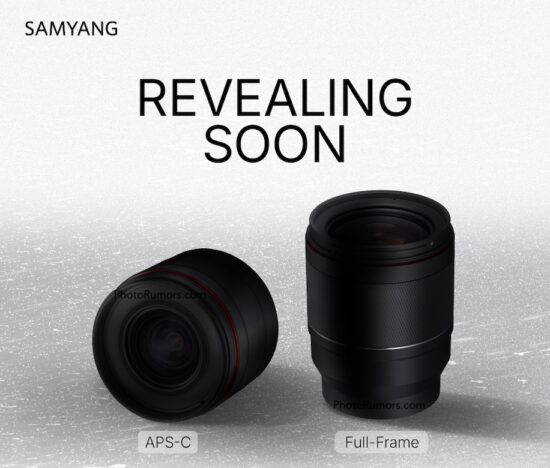
Samyang will soon announce two new lenses - one APS-C and one full-frame. The APS-C model will most likely be the already leaked Samyang AF 12mm f/2 RF-S lens for Canon RF mount:
New Samyang AF 12mm f/2 RF-S lens for Canon RF mount leaked online
The second full-rame lens will most likely be this leaked 35mm model:
The post Samyang to announce two new lenses soon appeared first on Photo Rumors.
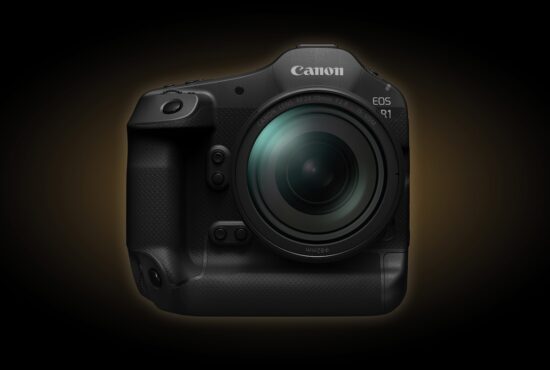
The new Canon EOS R1 camera is already in stock at Amazon from an authorized US dealer:
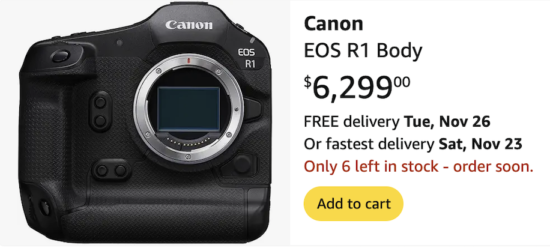
Despite the buzz online, I don't think many people pre-ordered the R1 flagship camera:
Canon announced shortages for the latest EOS R1, EOS R5 Mark II cameras, and other products
It seems that the new Canon EOS R1 camera is a flop based on the number of pre-orders so far
The post The Canon EOS R1 camera is already in stock appeared first on Photo Rumors.
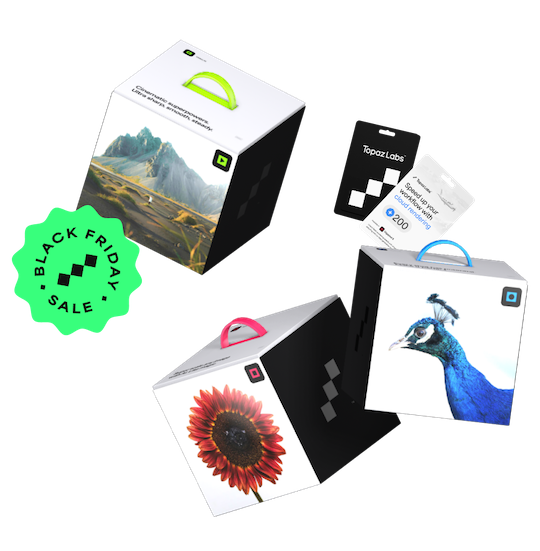

Topaz Labs started their Black Friday deals today (see all Black Friday deals here):
For new users: get every app, 12 months of updates, plus Cloud Credits for $299 (54% off), including:
For existing users: upgrade and unlock the latest features across all our apps for just $199, including:
More deals are available on the Black Friday sale page: the pricing adjusts dynamically based on the products you already own, ensuring you get the best possible deal tailored to your current licenses.
Via NikonRumors
The post Topaz Labs started their Black Friday deals today appeared first on Photo Rumors.
 |
| Images: Canon, Nikon |
It wasn't long ago that many of our reviews of APS-C cameras had to come with a warning: no matter how good the body was, you were almost certainly going to be limited by lens selection. This was especially true with Nikon and Canon's mirrorless cameras. Sony has followed its longstanding tradition of letting third parties build out a healthy selection of lenses, and the selection for Fujifilm's APS-C-only X-mount is second to none, but Nikon's Z mount and Canon's RF mount appeared to be almost completely locked down. As a result, you could count the number of APS-C lens options available on your fingers.
Same old songEven during the DSLR era, the big camera makers had the conflict of interest of trying to up-sell users to their full-frame systems. It's always fallen to companies such as Sigma to provide the lenses to let APS-C work as a format in its own right. "Sigma has done more for enthusiast APS-C than Nikon, Canon and Sony combined" |
But things are changing. Over the past year, we've seen several APS-C lenses announced and released for Canon and Nikon cameras, filling notable gaps in the first-party lens lineups. But while the situation is improving, it's clear that the two companies are still in control.
This week, Sigma released four APS-C primes for Canon's RF mount, making good on its promise to release six licensed lenses for the system – earlier this year, it released the 10-18mm F2.8 and 18-50mm F2.8. Meanwhile, Nikon has allowed Sigma to release select primes for Z-mount – a trio of F1.4 primes at 16, 30, and 56mm. It's worth noting the company's 23mm F1.4 is the only one of its APS-C primes that it hasn't brought to Z-mount; it likely isn't a coincidence that Nikon's only own-brand APS-C prime lens is a 24mm F1.7.
However, Nikon hasn't actively prevented companies like Viltrox and Sirui from releasing a slew of Z-mount APS-C prime lenses, complete with autofocus. If you pick up a Nikon Zfc or Z50II, you can get anywhere from a 13mm F1.4 (20mm equiv.) to a 75mm F1.2 (113mm equiv.) to go with it, as well as most of the classic focal lengths in between.
 |
|
Sigma's APS-C prime lens lineup is quite good, and now most of them are available for almost any mirrorless APS-C camera. Image: Sigma |
This is an important change for APS-C shooters. Even going back to the DSLR days, it's felt like many manufacturers have viewed the format as a stepping stone to full-frame rather than something enthusiasts and pros might consciously choose. Neither Canon nor Nikon have been particularly prolific when releasing new APS-C glass. But with the gates being slightly opened, you're no longer limited to a few first-party options, manual-focus-only lenses from third parties, or heavier, more expensive full-frame lenses. Now, there's at least some selection of third-party lenses with autofocus to choose from, alongside Canon and Nikon's offerings.
Your choices are no longer limited to a few first-party options, manual-focus only lenses, or glass meant for full-frame bodies
This isn't to say that you can now buy any APS-C camera you want and be assured that all the lenses you want will be available – you are still at the mercy of what Canon and Nikon wish to allow. While plenty of primes are available for Z-mount APS-C cameras, no fast zoom lenses are available; Nikon's all start at F3.5 and end at F5.6 or F6.3.
In fact, there are currently no third-party APS-C zooms available for Nikon Z-mount at all, despite the fact that two have made the jump from E and X-mount to RF – it also goes without saying that there are many others more available on Fujifilm and Sony's systems. That's a bummer for anyone looking to step up from the kit lens or wanting to shoot sports or birds in anything but ideal lighting without having to shell out for and lug around a full-frame 70-200mm.
 |
|
Tamron has promised to bring its 11-20mm F2.8 APS-C lens to Canon RF mount this year as well – no word on Z-mount, despite Tamron bringing some of its full-frame lenses to Nikon. Image: Tamron |
RF mount at least has the two constant F2.8 zooms thanks to Sigma, with one more on the way from Tamron, though those are all at the wide end. However, there are far fewer autofocus primes available for Canon, as manufacturers like Sirui and Viltrox aren't producing them. That's not surprising; a representative for the latter once said that Canon had told it to stop producing products for RF mount. The 85mm F1.4 lens that Samyang announced for the system in 2020 also disappeared from the market not long after.
In a perfect world, these problems wouldn't exist. Canon and Nikon would make the lenses that their APS-C cameras needed to stand on their own feet as a real alternative to full-frame options, and there would be robust competition from third parties, which would be allowed to make whatever lenses they want.
None of that seems particularly likely. However, at least those who choose to shoot with a smaller sensor in a Canon or Nikon body have gotten a wider choice of lenses, even if they're still bound by the companies' rules.
At the end of the day, that's better for everyone interested in APS-C, because it means that cameras like the EOS R7 and Z50II are competitive with the Sony a6700 and Fujifilm X-T5 in a way that they wouldn't have been with an extremely limited lens selection. With any luck, this trend will continue, and the APS-C landscape will become more competitive – even if Canon and Nikon aren't giving it their full attention.

Yesterday, Sony announced the a1 II, a new flagship camera aimed squarely at professional photojournalists shooting sports and other high-speed action. The camera uses the same 50MP sensor as its predecessor but features an updated autofocus system that supports more subject recognition types.
While we'll have plenty more testing to do once we get a production model, we were able to get a feel for what the camera is capable of by shooting part of an American football game and several portraits in New York City, as well as using it for other general photography in Florida and Washington State. You can see the results in the gallery above.
Click here to view the sample gallery

Here are a few Sony a1 ll camera specification comparisons with other models:
Sony A1 II camera and Sony 28-70mm f/2 GM lens officially announced
The post Sony a1 ll camera specification comparisons with other models appeared first on Photo Rumors.

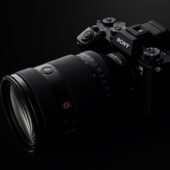
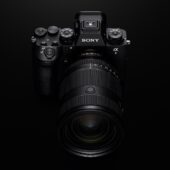
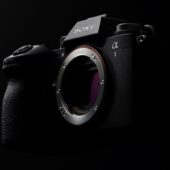

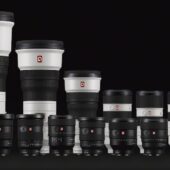
The previously rumored Sony A1 II camera and Sony 28-70mm f/2 GM lens are now officially announced:
Sony a1 ll camera specification comparisons with other models
Sony A1 II Digital Camera
We’re thrilled to introduce the Sony A1 II. Packed with groundbreaking features designed to elevate both image quality and shooting experience, the A1 II sees significant upgrades to AF performance, AI processing, and its low-light sensor capabilities; capturing pin-sharp, high-resolution shots with minimal noise. Taking on features of the A7R V and A9 III, this model is equipped with advanced features for filmmakers including 8K 30p recording with 8.6K oversampling and a new 4-axis multi-angle monitor for complete creative control.
Sony 28-70mm f2 G Master Lens
The Sony 28-70mm f2 G Master expands Sony’s premium lens lineup, offering a versatile focal range combined with the renowned quality of Sony’s industry-leading optics. This lens features XD linear AF motors for fast, precise focusing, a constant f2 aperture for impressive low-light performance, and a minimum focusing distance of 38cm across the entire range. With its optical makeup and expressive bokeh, the 28-70mm f2 G Master delivers pin-sharp images that rival prime lenses.
The post Sony A1 II camera and Sony 28-70mm f/2 GM lens officially announced (update: pre-orders now open) appeared first on Photo Rumors.
 |
The Sony Alpha 1 II is the company's latest flagship full-frame mirrorless camera. It's built around the same 50.1MP stacked CMOS sensor as the original but now includes an "AI processing unit," which allows its autofocus system to recognize seven different subject types and to automatically select one based on what's in the scene.
The a1 II will retail for $6,499.99 – the same as its predecessor – and will be available in mid-December.
 |
Despite using the same sensor as its predecessor, Sony claims the a1 II will have improved image quality at mid-to-high ISOs thanks to its improved image processing engine. Presumably, these improvements will only appear in the JPEGs.
The original a1's autofocus system could recognize humans when shooting stills and videos, and animals and birds when shooting stills. The a1 II, however, inherits the dedicated "AI processor" seen in cameras like the a7R V and a9 III and can now recognize even more subjects: it adds insects, cars, trains and airplanes. All the recognition modes are now available in movie mode as well, and the system can specifically target key parts of recognized subjects, such as a driver's helmet.
The a1 II brings an 'Auto' subject recognition mode to the Alpha line
Sony also claims that human and animal eye recognition should be around 30% better than the a1 and that bird eye recognition should be 50% better. The Animal and Bird modes have also been merged, meaning you won't have to switch between subject recognition modes if you want to go from shooting animals to birds or vice versa.
 |
| The a1 II's Auto Subject Detection mode lets you narrow-down the types of subject it'll search for, to help optimize the performance. |
Not that you would necessarily have to switch modes manually. The a1 II is Sony's first Alpha camera to have an Auto subject recognition mode, where it can determine what type of subject it should be tracking and lock on to it. As with the similar system on Nikon's cameras, this comes with a small speed penalty compared to having a specific subject recognition mode selected. However, it can be useful if you need to quickly go between shooting a variety of subject types.
You can also speed up the system by limiting which types of subjects the Auto mode selects between; for example, you can make it so it only looks for humans, animals, and birds if you're not planning to shoot any insects or vehicles.
Finally, Sony's also adding extra small and extra large spot focus area options.
One feature that's become commonplace since the launch of the a1 is pre-capture – a way for the camera to save the moments before you press the shutter, helping you capture key moments beyond your ability to anticipate them. The a1 II adds it, recording up to 30 frames in the moments leading up to you pressing the shutter button, though if you want to go above 20fps, you will be limited to using lossy compressed Raws instead of lossless compressed ones. When enabled, the pre-capture is activated by a half-press of the shutter, the press of the AF button, or both, depending on your settings.
You can set the pre-record window to be as short as 0.03 seconds or as long as a second, with several options in between.
The a1 II's internal image stabilization is now rated for up to 8.5 stops in the center of the frame and 7 stops on the periphery (a new CIPA metric), up from a 5.5 stop rating on the a1.
 |
Hardware-wise, the a1 II's EVF seems largely unchanged from the a1's: it's the same resolution and can run at the same 240fps. However, Sony says you can now run in 120fps mode with display quality set to 'high,' though you will still see a drop in resolution if you go up to 240fps.
There's also now a 'deep' viewfinder eyecup included in the box, alongside the standard one
 |
The a1 II retains most of the original's video specs. This means 8K capture at up to 30p, full-width 4K capture at up to 60p and up to 120p with a 1.13x crop. The 4K isn't derived from the 8K footage, though, so you don't gain the detail benefit of 2x oversampling.
The a1 II adds a few quality-of-life updates, though. The most impactful will probably be the aforementioned support for using all the subject tracking modes while shooting video, but you can also now import up to 16 custom LUTs that you can use to preview what your Log footage will look like when graded. You can also embed the LUT alongside your files, so that someone else editing your footage can match your intended look.
Just as we've seen with Sony's other recent large-sensor cameras, the a1 II only shoots the S-Log3 profile, which captures a very wide dynamic range. It no longer offers the less expansive S-Log2 option. The a1 II also gains the attractive and flexible S-Cinetone profile if you don't want to color grade in post.
The camera also has the Auto Framing feature found on some of Sony's vlogging cameras, where it will crop in on the subject and move the frame around to make it seem like there's a cameraperson tracking them. There's also a 'Dynamic active' image stabilization mode, which Sony says will increase the stabilization by up to 20% compared to the standard 'Active' mode, and a 'Framing Stabilizer' mode that's meant to ensure that your frame maintains the same composition as much as possible when shooting handheld.
Sony has expanded on the a1's pixel shift multi-shot mode, adding a noise reduction mode that shoots between 4 and 32 Raw images that can be composited together using a desktop computer running the company's Imaging Edge software. Sony pitches it as a mode for low-light portraiture.
It's most easily understood as a multi-shot mode without the pixel-shift movement. Rather than trying to boost resolution it aligns and combines multiple images to boost the signal-to-noise ratio (ie: tonal quality) at each pixel position. As with pixel shift mode, it'll work best when there's little to no movement within your scene.
The a1 II also gains focus bracketing, which the original a1 lacked.
The most direct competitor to the a1 II is Nikon's Z9, its pro-focused high speed, high resolution model. Canon's EOS R1 lower resolution makes it more of an a9 III competitor, but it's these models primarily and explicitly made for professional shooting in the most demanding circumstances that Sony's trying to target.
However, given how much of the Z9 and R1 Nikon and Canon have included in the Z8 and EOS R5 II, respectively, it's also fair to include one of those models here, too. Sony doesn't use the two-grip and larger battery design for its pro models, which makes the comparison even more inviting, despite them being a different class of camera.
| Sony a1 II | Nikon Z9 | Canon EOS R5 II | Sony a1 | |
|---|---|---|---|---|
| MSRP | $6,499 | $5,499 | $4,299 | $6,499 |
| Pixel count | 50MP | 45MP | 45MP | 50MP |
| Sensor type | Stacked CMOS | Stacked CMOS | Stacked CMOS | Stacked CMOS |
| Max frame rate |
E: 30fps lossy compressed Raw / 20fps lossless compressed raw |
20fps 14-bit Raw 30fps JPEG |
E: 30fps M: 12fps |
E: 30fps lossy compressed Raw / 20fps lossless compressed raw M: 10fps |
| Flash sync speed | M: 1/400 E: 1/200 |
E: 1/200 |
M: 1/200 E: N/A |
M: 1/400 E: 1/200 |
| Stabilization | 8.5EV center, 7EV periphery | 6EV | 8.5EV | 5.5EV |
| Max video res / rate | 8K/30 | 8K/60 | 8K/60 | 8K/30 |
| Video formats |
|
|
|
|
| AF sensitivity | -5.33EV* | -5.0EV (-7.0 in Starlight AF mode) | -7.5EV | -5.33EV* |
| Viewfinder |
9.44M dots 0.90x |
3.69M dots 0.80x | 5.76M dots 0.76x | 9.44M dots 0.90x |
| Rear LCD | 3.2" 2.1M dot, fully articulating with tilt | 3.2" 2.1M dot, 4-axis tilting | 3.2" 2.1M dot, fully articulated | 3.0" 1.44M dot, tilting |
| Connectivity |
|
|
|
|
| Stills battery life EVF / LCD | 420 / 520 | 700 / 740 | 250 / 540 | 430 / 530 |
| Video battery life (LCD) Cont. / Actual | 150 min / 90 min | 170 min / - | 150 min / 95 min | |
| Dimensions | 136 x 97 x 83mm | 149 x 150 x 91mm | 138 x 98 x 88mm | 129 x 97 x 81mm |
| Weight | 743g | 1340g | 670g | 737g |
* - Sony rates its AF sensitivity using an F2 lens, while Nikon and Canon use an F1.2 lens. We've adjusted Sony's rating by -1.33EV to account for the difference.
The a1 II has the joint fastest shooting rate here and its sensor readout is quicker than the roughly 1/160 that the EOS R5 II can achieve. Likewise it has a built-in Ethernet connection, which the Canon lacks and, unlike the EOS R5 II and Nikon Z8, has matched card slots so that pros can focus on a single type of media and never have to worry about an performance difference between slots.
It's much more evenly-matched against the Z9, which has a much lower resolution viewfinder but a low-latency readout path from its sensor to make the viewfinder more responsive. The Z9 can only shoot at up to 20fps in Raw, dropping to 12-bit readout and JPEG-only mode to hit 30fps.
 |
Given that the a1's audience is professionals who use it day in and day out, it's no surprise that Sony has been conservative with changes to its magnesium body and controls – the a1 II's tweaks are largely the same as the a9 III's, with the grip getting deeper and the shutter button being angled forward towards your finger.
 |
The dials and buttons are largely in the same places, though the exposure compensation markings have been removed from the locking top-plate control dial. The stills / video / S&Q modes have also been moved to a sub-dial rather than being settings on the mode selector dial, and the drive select dial now has a disable setting that lets you control the camera's drive mode purely through menus.
The a1 II also features an additional programmable button on the front next to the grip. By default, it acts as a 'Speed Boost' button, upping your shooting rate as you hold it down. For example, you could be shooting at 15fps and press the button to start shooting at 30fps for a few seconds when the action speeds up or when you want to be sure you'll capture a specific moment. This option can be moved to another button and the boosted frame-rate can be tailored to suit your subject.
 |
The biggest physical change is the display. It's a bit larger and higher resolution than the a1's, and it can now tilt in addition to being fully articulated. It's a design we saw with the a7RV, and one that should make both photographers and videographers happy. It also has the slightly updated menu system from the a7RV as well, with the interactive settings tab.
As discussed above, the viewfinder is largely still the same, with a large 0.9x magnification and 9.44M dots giving a resolution of 2048 x 1536px. Its 120fps mode is nicer to use now that it doesn't come with a substantial drop in resolution.
Ports and slots
 |
The a1 II's I/O is largely unchanged from its predecessor, though the ports have moved around a bit. It still has a headphone and microphone jack, a USB-C port that runs at 3.2 Gen 2 10Gbps speeds, a full-size HDMI port, Sony's micro USB 'Multi' accessory port, and a flash sync port.
It also has dual-band 2.4 and 5GHz Wi-Fi with 2x2 MIMO and an upgraded Ethernet port that runs at 2.5Gbps instead of the 1Gbps speeds the port on the a1 was limited to. That should make transferring large videos and batches of photos over long distances faster – try finding a high-speed USB-C cable that's more than a few meters long – and is another sign of the pro workflows this camera is designed to support. The Ethernet port also now has a Wake on LAN feture that can be used to remotely turn the a1 II on using Remote Camera Tool.
 |
On the other side, the a1 II features a pair of the combined CFexpress Type A / UHS-II SD card slots for storage that feature on many of Sony's cameras.
 |
The a1 II uses Sony's NP-FZ100 batteries, and includes a dual-battery charger in the box, which it claims will charge two batteries at once in around 155 minutes.
The camera is rated to give 420 shots per charge when using the rear screen. As always, CIPA figures tend to significantly underestimate the actual number of shots most people will get, and this discrepancy gets significantly larger when you're shooting bursts. But, while we'd expect a camera rated at 420 shots per charge to actually be able to shoot multiple times this number in practice, it's usually a good indicator of how its battery life compares with other cameras (ie: if it gets a rating 50% lower than another camera, it's likely to capture around 50% fewer shots per charge).
By Richard Butler
 |
|
The a1 II's AF proved very effective at staying focused on the player we'd specified, in our testing so far. Sony FE 400mm F2.8 GM OSS | F2.8 | 1/4000 sec | ISO 640 |
When the original a1 arrived, just shy of four years ago, it represented an unprecedented combination of high resolution and speed. Despite a 50MP sensor, its Stacked CMOS design with on-board RAM let it capture stills at up to 30fps with readout speeds of around 4ms (fast enough to allow flash sync at up to 1/200 sec). This was around four times faster readout than the 20fps Canon EOS R5, which had previously come closest to offering high-speed and high res.
However, in the time that's passed, both Canon and Nikon have produced fast high-res bodies and done so at something closer to a consumer-reachable price, leaving Sony's pro flagship looking expensive, rather than exemplary. Don't let this or Sony's single-grip approach fool you: the a1 II is designed to square-up against the Z9 and R1, not the Z8 and R5 II. But it goes to show how quickly things have been moving that these more affordable models can match so much of the of the original a1's spec and offer more advanced subject recognition.
The a1 II helps redress this balance, somewhat, pairing the same processing capabilities as Sony's other pro-focussed model, the a9 III, with the 50MP Stacked CMOS sensor. This includes the gain of subject recognition AF modes with the first 'Auto' option that lets you pare back the range of subjects it hunts for, to hit an optimal speed/convenience balance for your photography. We've been very impressed by the camera's AF performance so far.
The a1 II also gains the pre-capture option that's been becoming increasingly common on action-focused cameras. It still tops-out at 8K/30 on the video side though, and has no option for 4K derived from this 8K capture, leaving it behind both the R5 II and Z8 in this regard.
Interestingly, the a1 II still needs to drop to Sony's damagingly lossy Raw format at 30 fps: it can only shoot lossless compressed Raw at 20fps. The difference only becomes apparent at high-contrast edges after significant editing pushes, so is unlikely to be a major issue for action shooting, but it's a surprise that this couldn't be addressed with the Mark II's greater processing grunt.
"It's these workflow features aimed at professionals that try to set the camera apart"
Critically, the a1 II also includes a series of features from both the a1 and the a9 III designed specifically for professionals trying to deliver images quickly that the less expensive rivals lack. This includes a variety of transfer options, including SFTP and several ways of marking files to be transferred. We'd also expect the a1 II to gain the ability to encode C2PA authentication metadata to its files.
Unsurprisingly, it's the cumulative impact of these workflow features aimed at professionals working in high-intensity environments that try to set the camera apart. And if you're not one of those people (and most of us aren't), then the a1 II almost certainly isn't worth so much more than the more consumer-priced models.
But how can these small details, an Ethernet port, that huge, high-res viewfinder and details like matched media card slots really add up to justify a 50% premium over the enthusiast/pro crossover bodies, such as the Z8 and EOS R5 II? Ultimately, it may simply be a 'Pro Tax': that $6K is how much a pro-focused camera costs. It's the amount the market has shown it will bear, and it's likely to be how much companies (including single-photographer companies) will have budgeted.
If there's any doubt in your mind about whether the a1 II is worth the extra $2000 over the Z8 or EOS R5 II, then you're not its target audience, and consequently it almost certainly isn't, But if you are a Sony-shooting pro, the a1 II adds significantly to the skill-set of the previous model. But against dramatically improved competition and with so much Z9 and R1 tech trickling down to the Z8 and R5 II, it's not the game-changer its predecessor was. We'll get a chance to test this assessment as we continue using the camera.
Please do not reproduce any of these images on a website or any newsletter/magazine without prior permission (see our copyright page). We make the originals available for private users to download to their own machines for personal examination or printing (in conjunction with this review); we do so in good faith, so please don't abuse it.

 |
|
The FE 28-70mm F2.0 GM, attached to the newly-announced a1 II. Photo: Mitchell Clark |
Sony has announced the FE 28-70mm F2 GM, a zoom lens that trades 4mm at the wide end for an aperture that's a stop brighter than the one found on a classic 24-70mm F2.8. It's the company's first constant F2 zoom lens for its E-mount cameras.
The lens's optical formula consists of 20 elements in 14 groups, with three aspherical lenses, three super ED elements, and one ED element. It uses an 11-blade aperture. The front element has an oil and water-resistant flourine coating, and the lens is moisture and dust resistant.
It's far from a compact lens, though it's not as monstrously large as you might expect – it weighs in at 918g (32 oz) and is around 140mm (5.5") long. It has an 86mm filter thread.
Sony makes it obvious what lens it's competing with, highlighting that it's 36% lighter and 11% smaller in diameter than Canon's RF 28-70mm F2 L lens while claiming better corner-to-corner sharpness. The company also says the lens's four linear motors can focus even when shooting at 120fps, and emphasized that they're quieter than the older ring-type ultrasonic style motor in the Canon F2. In fairness, that lens was one of the original RF-mount releases, announced in 2018.
"Sony makes it obvious which lens it's competing with"
The quieter operation should help when shooting video. Other pluses for video: it has an internal focusing mechanism which should make it easier to use the lens on a gimbal, the ability to switch the aperture ring into clickless mode and support for the focus breathing compensation mode included on some Sony bodies. You can also set the manual focus ring to have a linear response, which should make focus pulls easier.
The lens has a variety of switches and buttons. There are two customizable focus hold buttons, an Iris lock switch, the aperture click switch and a zoom smoothness switch that lets you adjust between "smooth" and "tight" torque settings.
It's not the fastest zoom lens available for E-mount: at the time of writing, that prize goes to Sigma's 28-45mm F1.8, though that model has substantially less reach on the tele end and only a 1/3EV increase in light-gathering ability.
The FE 28-70mm F2 GM will be available in mid-December and has an MSRP of $2,899.
Press Release:
The Unique Combination of a Versatile Focal Range, Large F2 Aperture, and Compact Form Factor
SAN DIEGO, Nov. 19, 2024 - Sony Electronics Inc. introduces the 28-70mm F2 G Master, the first1 Sony zoom lens with a constant F2 aperture and 77th lens in the Sony E-Mount lineup. This full-frame lens offers a versatile focal range from 28mm to 70mm while delivering prime-like2 bokeh with its constant F2 aperture. Despite its wide aperture and zoom range, the 28-70mm F2 G Master remains compact, lightweight, and well-balanced, making it ideal for both photography and video applications. This combination of zoom range, large aperture, and compact design makes this an innovative and versatile lens for portrait, sports, wedding, event, and video professionals.
“Our goal with the 28-70mm F2 G Master was to create a high-performing zoom lens that could be a strong single lens alternative to multiple primes,” said Yang Cheng, Vice President of Imaging Solutions, Sony Electronics Inc. “We prioritized a lightweight design during the engineering process as we knew that was a critical factor for real-life, practical use. And in a manner that only Sony can do, we were able to deliver a small, standard F2 zoom lens that does not sacrifice image quality. We’re proud to add this to our G Master series and believe it is one of the most innovative lenses ever offered to professionals.”
The 28-70mm F2 G Master produces extremely sharp corner-to-corner results throughout the entire zoom range, even while shooting wide open at F2. The high-resolution output is made possible by the three XA (extreme aspherical) elements and three aspherical elements built within the lens that minimize aberrations. The lens also features a floating focusing system that helps maintain internal stability. This focusing mechanism enables an impressive minimum focusing distance of up to 14.8 inches (0.38m) throughout the entire zoom range.
Staying true to the G Master lens lineage, the lens’ aperture up to F2 produces extraordinary bokeh, ideal for creating images that showcase a shallow depth of field. The 28-70mm F2 amplifies the G Master bokeh standards through a newly designed 11-blade circular aperture unit. Chromatic aberrations, which cause color fringing within photos, are effectively minimized with three Super ED (extra-low dispersion) elements and one ED element built within the lens. Additionally, Sony’s Nano AR Coating II reduces flare and internal reflections, ensuring clear images, even when strong light sources are present in the frame.
The 28-70mm F2 G Master is one of the most advanced mirrorless camera lenses manufactured with a total 20 different lens elements arranged within 14 internal groups. Despite the advanced optical design, the lens remains compact at 3.6 x 5.5 inches (92.9 x 139.8mm) and lightweight at approximately 32.3 ounces (918g). The combination of imaging performance and a compact form factor offers an innovative solution that meets the demands of industry professionals.
Reliable and responsive autofocus is delivered through the lens’ four XD (extreme dynamic) linear motors powered by advanced control algorithms. This smooth performance system provides accurate and quick focus tracking, often essential in many professional use cases like weddings and sports. This lens is fully compatible with Sony’s Alpha 9 III‘s high-speed continuous shooting capabilities of up to 120 frames per second3 with AF/AE (autofocus/autoexposure) tracking, even while zooming.
Along with its F2 aperture, the zoom range of the 28-70mm G Master provides a versatile video option that can cover standard field-of-view shots and tighter compositions up to 70mm. This lens minimizes focus breathing through its build and compatibility with the Breathing Compensation feature on various Alpha bodies4. Its high autofocus performance ensures reliable focus even when recording in high frame rates up to 4K 120p / FHD 240p5. Additionally, the XD linear motors and newly developed aperture unit operates silently, preventing any lens noise from being captured during filming.
The lens is ideal for gimbal use with a minimal zoom extension of approximately .68 inches. The compact form factor and short external zoom helps maintain gimbal balance, even at varying focal lengths.
Key control features include Linear Response MF for intuitive manual focusing, adjustable zoom ring torque, and an aperture ring with a click ON/OFF switch. The lens also offers two customizable focus hold buttons, an iris lock switch, and an AF/MF switch. The 28-70mm F2 G Master has an 86mm filter diameter and a convenient window on the lens hood for variable filter adjustments.
For durability, all buttons and switches are sealed with silicone gaskets, and critical areas are designed to resist dust and moisture6. This ensures reliability, even while using in challenging outdoor environments. Additionally, a fluorine coating on the front element repels contaminants for easy cleaning.
The 28-70mm F2 G Master will be available in December 2024 for approximately $2,899.99 USD and $3,999.99 CAD. It will be sold at a variety of Sony's authorized dealers throughout North America.
A product video on the new 28-70mm F2 G Master can be viewed here: https://youtu.be/7Y_O5YYQIl0
For detailed product information about the 28-70mm F2 G Master, please visit: https://electronics.sony.com/imaging/lenses/full-frame-e-mount/p/sel2870gm
Exclusive stories and exciting new content shot with the new 28-70mm F2 G Master and Sony's other imaging products can be found at www.alphauniverse.com, a site created to inform, educate, and inspire content creators.
| Principal specifications | |
|---|---|
| Lens type | Zoom lens |
| Max Format size | 35mm FF |
| Focal length | 28–70 mm |
| Image stabilization | No |
| Lens mount | Sony E, Sony FE |
| Aperture | |
| Maximum aperture | F2–20 |
| Minimum aperture | F2–20 |
| Aperture ring | Yes |
| Number of diaphragm blades | 11 |
| Optics | |
| Elements | 20 |
| Groups | 14 |
| Special elements / coatings | 3 aspherical, 3 super ED, 1 ED |
| Focus | |
| Minimum focus | 0.38 m (14.96″) |
| Maximum magnification | 0.23× |
| Autofocus | Yes |
| Motor type | Linear Motor |
| Focus method | Internal |
| Distance scale | No |
| DoF scale | No |
| Physical | |
| Weight | 918 g (2.02 lb) |
| Diameter | 93 mm (3.66″) |
| Length | 140 mm (5.51″) |
| Sealing | Yes |
| Colour | Black |
| Filter thread | 86 mm |
| Hood supplied | Yes |

 |
We're at Sony's 'Creative Space' event in New York, which happens to coincide with when the company said it would announce the Alpha 1 II. We'll be reporting from the event as it happens.
"Authentication technologies, that protect photographers are high on our list of priorities," says Masaaki Oshima - Head of Imaging Entertainment Business.
He's discussing the role played by the different models in the company's lineup.
The Alpha 1 provided extraordinary resolution and speed, he says, and feedback from its users has been incorporated into its new products.
 |
As previously teased, he has revealed the Alpha 1 Mark II and a 28-70mm F2 G Master zoom.
In the a1 II, features for workflow efficiency have been updated and improved, he says.
He claims the lens rivals the quality of primes, without the use of digital compensation.
The a1 II has a dedicated "AI" processor, allowing what Sony says is "the best human detection, the best animal detection." It includes a technology Sony calls 'Human Pose Estimation' which tries to recognize human bodies in a wide range of poses, so that it can find the face and eye.
 |
The AF system has 759 points, with 92% coverage and works down to -4EV when using an F2.0 lens. The system can perform 120 autofocus calculations per second.
The camera also gains pre-capture, allowing it to capture up to 1 seconds-worth of images at up to 30fps, with Raw. The a1 II also gains the 'Speed Boost' function from the a9 III, letting you boost the burst rate when you hold down a custom button.
The camera's in-body stabilization now performs 3 stops better than the Mark 1, now rated at 8.5EV. It co-ordinates with in-lens stabilization to maximise performance with OSS lenses.
In addition to the multi-shot pixel-shift mode, the a1 II also has a Raw compositing mode to boost noise performance by combining multiple images (in off-board software).
As with the Mark 1, the a1 II shoows 8K at up to 30p, derived from 8.6K capture. It can also shoot 4K/60p from an APS-Cregion, taken from 5.8K oversampling. It can also capture full-width 4K at up to 60p, though this isn't taken from the 8K feed.
 |
It also gains the 'Auto Framing' and 'Framing Stabilizer' modes from the ZV-E1 vlogging camera: punching in to the footage and following your subject around the frame, to give dynamism to locked-off shots, or maintaining your chosen composition if you're presenting to camera, hand-held.
The a1 II has the same 0.9x magnification viewfinder as its predecessor, with 9.44MP dot resolution, and can be operated at up to 240 fps. It also comes with a second, alternative "squishy" eyepiece cup in the box.
The camera has a 2.5Gbps Ethernet port with improved FTP capabilities, 2.5x faster than in the a1 or a9 III.
The a1 II will be available in Decemeber 2024.
Read our initial review of the a1 II here
The FE 28-70mm F2 is the company's 77th E-mount lens, the 56th full-frame E-mount lens and the first constant F2.0 zoom.
The company says it give "prime levels of performance" for both stills and video.
We're told the lens doesn't rely on digital correction. It weighs 981g (2.16lbs). Its autofocus is designed to work up to 120fps on the a9 III or 240fps for video. It uses four linear motors to drive its autofocus.
It has almost no focus breathing, Sony says, but you can add focus breathing compensation on compatible bodies to correct what breathing there is.
They say it has "the best image quality we've ever produced in a zoom lens."
It will also be available in December 2024.
Read our full story on the 28-70mm F2 here

 |
| Image: Sigma |
Earlier this year, Sigma announced plans to release several of its DC DN APS-C lenses for Canon's RF mount, making it one of the first third-party manufacturers to sell autofocus RF lenses under license.
Today, the company has announced pricing and availability for four of those lenses: the 16mm F1.4 DC DN, the 23mm F1.4 DC DN, the 30mm F1.4 DC DN and the 56mm F1.4 DC DN. On Canon's APS-C cameras, the lenses deliver full-frame equivalent focal lengths of 26mm, 37mm, 48mm, and 90mm, respectively.
These prime lenses join two Sigma zoom lenses announced for RF-mount earlier this year: the 10-18mm F2.8 DC DN, announced on October 5, and the 18-50mm F2.8 DC DN, which has been available for other lens mounts since 2021.
This brings the total number of Sigma APS-C lenses for RF-mount cameras to six, significantly increasing the number of dedicated APS-C lenses available for Canon's RF system. To date, Canon has released only a handful of slow RF-S zoom lenses, along with a dual fisheye lens for VR or spatial capture, though users can also use Canon's full-frame RF-mount lenses on its APS-C cameras.
 |
|
The four Sigma F1.4 DC DN prime lenses join two F2.8 zoom lenses in Sigma's APS-C lineup for Canon RF mount. Image: Sigma |
With Sigma's newly minted RF-mount lenses in the mix, Canon's RF mount should become more attractive to APS-C shooters, especially those looking for dedicated APS-C lenses with faster apertures or primes.
The six lenses are already available for Sony E-mount, Fujifilm X-mount, and L-mount cameras. The 16mm F1.4 DC DN and 56mm F1.4 DC DN are also available for Z-mount and Micro Four Thirds.
The Canon versions of the 30mm and 56mm lenses will arrive first, launching on December 5. The 30mm F1.4 DC DN will retail for $369, and the 56mm F1.4 DC DN will retail for $529.
The 16mm and 23mm lenses will follow on January 23. The 16mm F1.4 DC DN will retail for $489, and the 23mm F1.4 DC DN will retail for $599.
Sigma 16mm F1.4 DC DN for Canon RF mount
$489 at B&H $489 at AdoramaSigma 23mm F1.4 DC DN for Canon RF mount
$599 at B&H $599 at AdoramaSigma 30mm F1.4 DC DN for Canon RF mount
$369 at B&H $369 at AdoramaSigma 56mm F1.4 DC DN for Canon RF mount
$529 at B&H $529 at Adorama


As I reported earlier today, Sigma officially released the four Sigma f/1.4 prime lenses for Canon RF mount. Pre-orders are already open at Adorama and B&H Photo. Here are the launch dates:
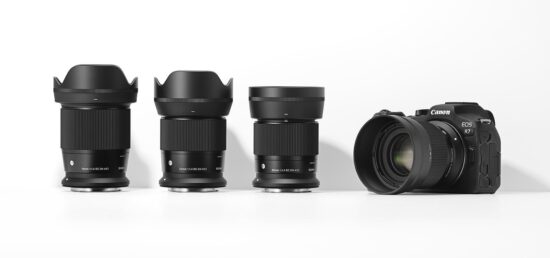
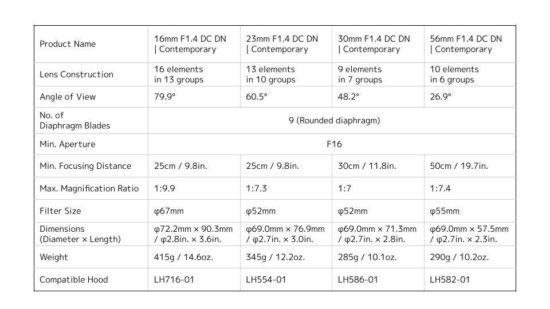
Sigma's APS-C size mirrorless dedicated prime lenses, the SIGMA 16mm F1.4 DC DN | Contemporary, SIGMA 23mm F1.4 DC DN | Contemporary, SIGMA 30mm F1.4 DC DN | Contemporary and SIGMA 56mm F1.4 DC DN | Contemporary will now be available for the Canon RF Mount.
A control algorithm including AF drive and communication speed optimization has been developed specifically for Canon RF Mount interchangeable lenses. In addition to realizing high-speed AF, the lens also supports Servo AF and in-camera aberration correction*. The mount is rubber-sealed to cater for use in a variety of environments.
The post Four Sigma f/1.4 prime lenses for Canon RF-mount officially released and available for order appeared first on Photo Rumors.
Related posts:
Pixii Max digital rangefinder camera sensor test results by PhotonsToPhotos
Used Nikon Z6III cameras up to 28% off, Nikon rebates, first Black Friday deals
SmallRig EN-EL15c USB-C rechargeable battery now compatible with the Nikon Z6III camera
Fujifilm X-M5 Will Only Ship With English and Japanese Languages in Japan
The post What else is new? appeared first on Photo Rumors.